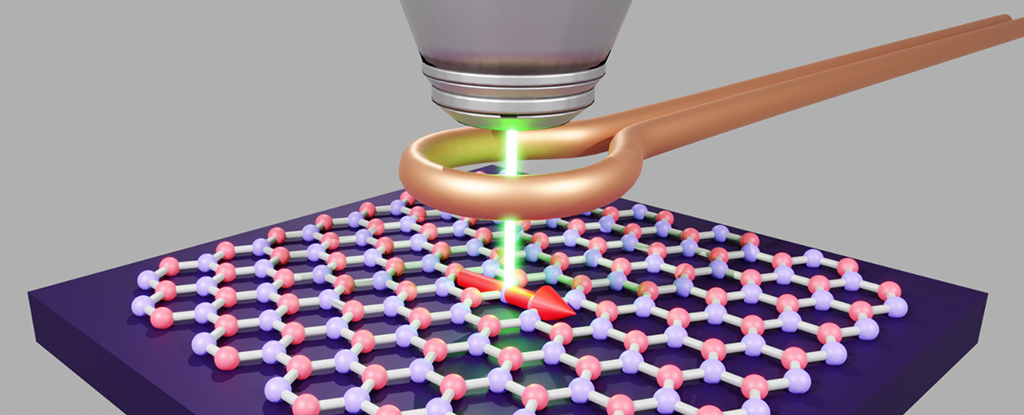Microscopic chinks in material just several atoms thick have the potential to advance a multitude of quantum technologies, new research shows – getting us closer to the widespread use of quantum networks and sensors.
Right now, storing quantum data in the spin properties of electrons, known as spin coherence, requires a very particular and delicate laboratory setup. It’s not something you can do without a carefully controlled environment.
Here, an international team of researchers managed to demonstrate observable spin coherence at room temperature, using the tiny defects in a layered 2D material called Hexagonal Boron Nitride (hBN).
“The results show that once we write a certain quantum state onto the spin of these electrons, this information is stored for around one millionth of a second, making this system a very promising platform for quantum applications,” says physicist Carmem Gilardoni from the University of Cambridge in the UK.
“This may seem short, but the interesting thing is that this system does not require special conditions – it can store the spin quantum state even at room temperature and with no requirement for large magnets.”
The layers of hBN stay locked together through molecular forces built into the material itself, but defects can emerge when the material is synthesized or processed. This gives tiny places where electrons can be trapped.
Not only were the researchers able to trap and observe electrons in hBN defects, they were also able to manipulate them using light. This is a first for experiments of this type at normal, ambient temperatures.
Based on the measurements taken by the team, the use of hBN shows promise as stable quantum storage – even if quantum states can only be stored for a small fraction of a second right now, the signs are that it could eventually be scaled up.
“Working with this system has highlighted to us the power of the fundamental investigation of new materials,” says physicist Hannah Stern from the University of Manchester in the UK.
“As for the hBN system, as a field we can harness excited state dynamics in other new material platforms for use in future quantum technologies.”
Keeping quantum states – and quantum information – stable and protected from interference is an ongoing challenge for scientists, who are continually looking for new materials and new techniques to improve stability.
The team is now investigating ways to increase the spin storage time beyond a millionth of a second, improve the reliability of the defects and the quality of the light emitted from it.
As progress is made, slowly but surely, we’ll be able to develop more advanced quantum sensors – able to monitor minute changes in the Universe – and quantum networks for super-fast, super-secure information transmission.
“Each new promising system will broaden the toolkit of available materials, and every new step in this direction will advance the scalable implementation of quantum technologies,” says Stern.
The research has been published in Nature Materials.





